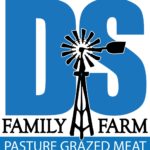Worried about what you are "really" eating? Have peace of mind with pasture grazed meats.
Prairie Gains – Guest Post
We are really excited about the post below. I recently had the opportunity to meet Daniel and Allyson of Lovegrass Beef. Daniel has a passion for prairies! Enjoy Daniel’s guest post:
Prairie Gains
By Daniel Frank – Lovegrass Beef
With spring finally here, and plants just beginning to green up, it’s time to get geared up for prescribed burning season. March 19th to 27th was the seventh annual Training Exchange (TREX) at the Niobrara Valley Preserve, near Johnstown, Nebraska. This is a chance for people around the United States and beyond to knock the rust off, and get back in the burning game. People come to learn, to teach, to get more experience, and also just to help the Preserve burn the acres they have planned.
Maybe I should start by talking about the benefits of prescribed burning. Controlled burns help suppress unwanted woody plants, such as eastern red cedar. They help reduce excess plant buildup in areas that weren’t grazed or hayed, allowing new growth to catch sunlight and flourish. If timed correctly, prescribed fire can also help suppress exotic species like Kentucky bluegrass and Smooth brome. Prairie ecosystems around the world evolved with the presence of fire, and with responsible prescribed burning we can maintain healthy ecosystems that can support a wide variety of life.
This was my second time attending TREX, and like the first year, I had a blast. I learned from the people around me, and I was able to use the knowledge I’d gained from the first year.

I am a big proponent of prescribed burning. I’ve seen first-hand the benefits of putting controlled fire on the ground. My major goal is to maintain a healthy, native, diverse prairie ecosystem. Fire is not the only major force that acts to shape our grassland ecosystems. There are three main forces that shape prairies: fire, grazing, and drought. We have little control over the moisture we receive year to year, so we can focus our management on the other two forces.
The Great Plains evolved with the presence of bison. They would move around the country grazing grasses and some forbs, being pushed by the weather, the quantity of forages, and the time of year. Though bison are not a dominant presence anymore, cattle are a pretty good substitute. With proper management, they are an excellent tool to manage the land. Without grazing, pastures can become overgrown, and some species can be choked out. When cattle graze some areas more than others, plant species respond and their composition changes. This is how rangeland becomes a mosaic of plant communities.

This brings me to raising cattle on grass. I sell grassfed beef because I believe that ruminant animals which evolved to eat grasses and forbs, should be able to eat that diet exclusively. I am trying to reduce the inputs required to raise market animals. At the same time, the cattle raised on grass are leaner, and are healthier for people to consume. As I already mentioned, grazing is necessary to maintain a healthy prairie. Using cattle as management tools while simultaneously producing a healthy, delicious type of meat is a win-win.
My partner, Allyson Dather, and I started selling grassfed beef under the name Lovegrass Beef in 2015. Sometimes we laugh about how cheesy the name sounds, but it was picked for a couple reasons. Here in the Sandhills we have a lot of Sand Lovegrass (Eragrostis trichodes), and Purple Lovegrass (Eragrostis spectabilis). These are native warm season grasses with showy seedheads, and the presence of Sand Lovegrass can be indicative of good range management. The other reason we picked the name is because since our cattle are grassfed, they sure ought to love grass!

Here at our ranch, we are starting to move our operation to becoming more environmentally aware. We have applied for cost-share programs to plant cropland back to rangeland. Hopefully in a few years we can sell the center-pivot irrigation systems after the native plants have a solid foothold. We will be using these pastures to graze cattle during the summer mostly. I’m hoping to be able to create a burn plan for our ranch, where we can defer grazing of certain pastures, and use fire to hold back any invasive plants. We have a 70 acre burn planned for this spring, where we will be putting fire on our land for the first time in probably 100 years. I’m excited to watch the burn in action, and very excited to see the results.
Thanks Daniel! “Lovegrass Beef”, I laughed also the first time I saw that name, awesome! If you would like to comment or connect with Daniel and Allyson, please visit their Facebook page!




